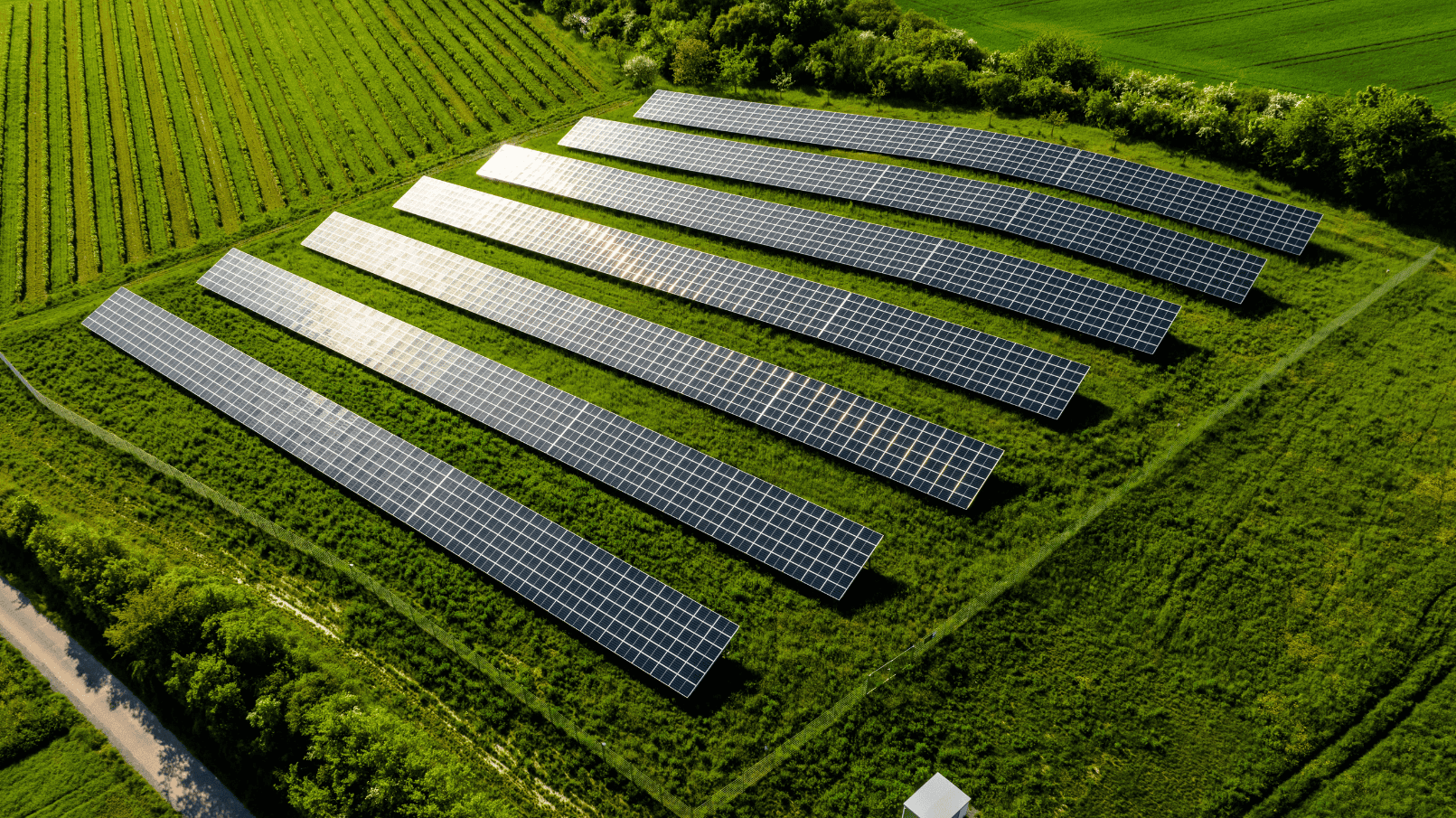Harvesting the Sun: How Commercial Solar Can Boost Farming Profits
It’s clear commercial solar installations has become a cornerstone in building sustainability and profitability across various industries in the US, but its impact is particularly noteworthy in one sector—agriculture. All across the country, where the fields and open land stretch far and wide, commercial solar is emerging as a catalyst for positive change for farmers and agriculture producers. Due to noteworthy tax incentives and grants, as well as a variety of other factors, commercial solar is transforming the landscape of American agriculture, fostering sustainability and bolstering profitability for farmers.
Utilizing Unused Land for Renewable Energy
Farms, with their vast expanses of land, hold a unique advantage in the quest for sustainable energy. Often times, farms don’t use every acre of land for traditional farming practices, leaving ample room for innovative solutions. Commercial solar offers farmers the opportunity to repurpose unused or less productive land into a valuable energy source. By strategically installing solar panels on these unproductive acres, farmers can effectively harness the power of the sun, transforming otherwise neglected spaces into a clean and renewable energy reservoir.
This dual-purpose land use not only diversifies revenue streams for farmers but also contributes to the overall sustainability of their operations. It aligns with the ethos of responsible land stewardship, allowing farmers to cultivate energy alongside their crops, creating a harmonious balance between agricultural productivity and renewable energy generation.
Addressing the Energy Demands of Agriculture
The agriculture industry is renowned for its energy-intensive activities, ranging from powering tractors and equipment to maintaining optimal storage conditions for harvested crops. In the face of these escalating energy demands, the sun emerges as an abundant and sustainable energy source that can be harnessed directly on the farm.
Solar power, through PV panels, provides a clean and cost-effective alternative to conventional grid electricity. By tapping into this renewable resource, farmers can significantly reduce their dependence on external power sources, leading to long-term cost savings. Additionally, the predictability of sunlight allows for strategic energy planning, enabling farmers to power their operations efficiently while minimizing the environmental impact associated with conventional energy sources.
Preserving Profits for Generations
In the heart of many agricultural enterprises beats the rhythm of family legacy and generational continuity. Farms, often family-owned operations, represent not just a source of livelihood but a heritage passed down through the ages. Commercial solar introduces a dynamic element to this legacy by ensuring the financial sustainability of the farm for generations to come.
The installation of solar panels translates into a direct reduction in electricity expenses—a significant operational cost for many farms. By harnessing the power of commercial solar, farmers can insulate themselves from the volatility of energy prices and, in turn, preserve and enhance their profits. This investment not only secures the financial viability of the farm but also fosters an environment where succeeding generations can continue the proud tradition of agriculture without the burden of escalating energy costs.
Unlocking Financial Incentives, Including USDA REAP Grant
Financial considerations often dictate the feasibility of adopting new technologies, and for farmers, the decision to embrace solar power is no exception. Recognizing this, local and federal institutions have provided incentive programs designed to make the transition to solar energy an economically attractive as possible. One such program, the USDA Rural Energy for America Program (REAP) Grant, stands out above the rest.
The REAP Grant is tailored to empower businesses in rural America, providing them with the necessary financial impetus to embark on commercial solar projects. This grant, which can offer up to $1 million in funding, becomes a pivotal catalyst for farms looking to harness the benefits of commercial solar energy. It not only eases the financial burden of initial investments but also accelerates the payback period, making solar adoption a prudent and rewarding choice for farmers.
Turn Unused Land Into an Energy Source
As the agriculture industry traverses the path toward sustainability, commercial solar is more attractive than ever, offering farmers the means to cultivate not only crops but a greener, more economically future. By converting unused land into a renewable energy source, addressing the energy-intensive nature of agricultural operations, preserving profits for future generations, and capitalizing on financial incentives like the USDA REAP Grant, farms can harness the power of the commercial solar.
If you have unused land that you’re looking to turn into an energy source and want to lower your energy costs, reach out to Genie Solar Energy today. Moving to commercial solar can be the first step to building a profitable legacy for your farm or argriculture business.

















